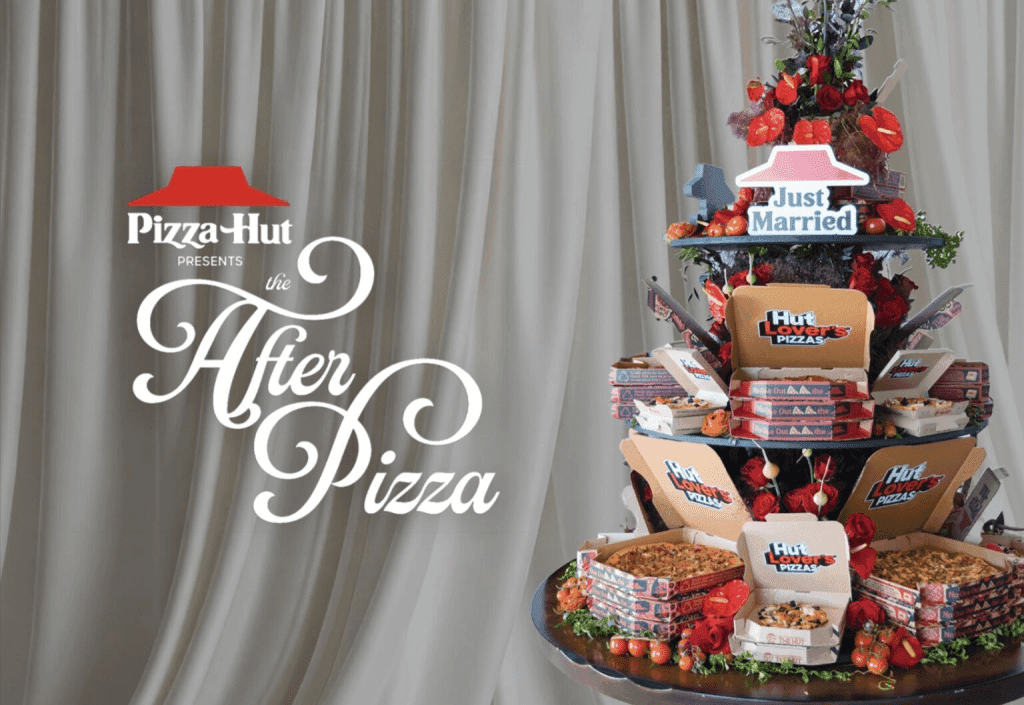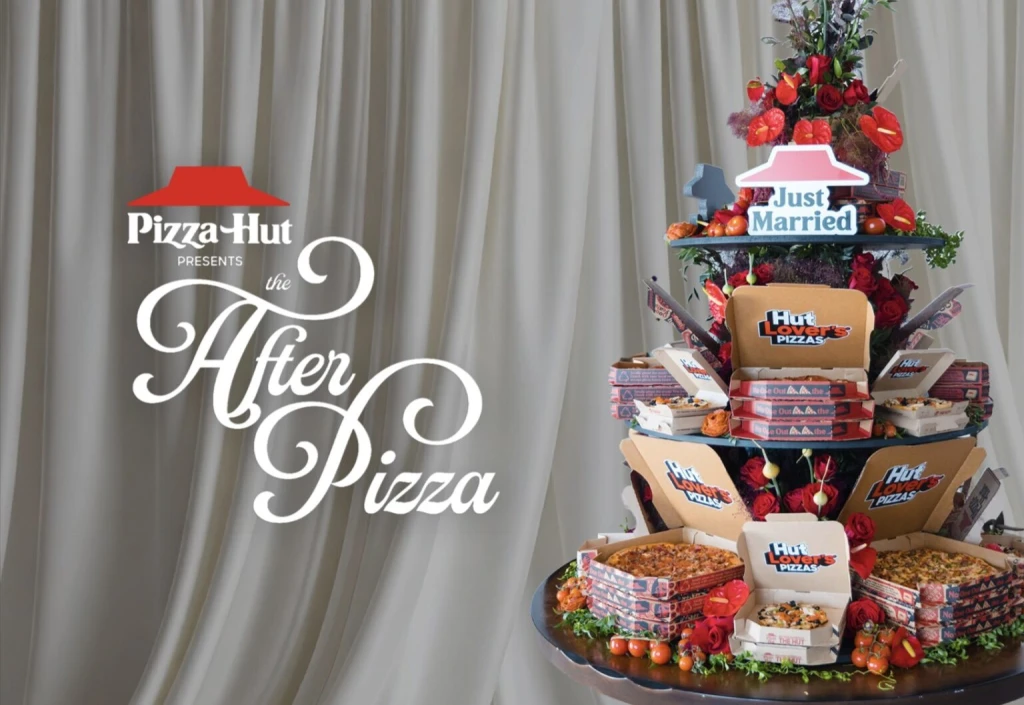Why Pizza Becomes Wedding Cake: Catering is the Key to Improving Margins
Pizza Hut just announced something that caught my attention: they're now targeting weddings with a five-foot-tall pizza "cake" made from their new Hut Lover's Line. Complete with pepperoni roses and edible florals, the creation is part of a campaign called "The After Pizza Cake," aimed at couples who want to serve late-night pizza at their wedding receptions.
At first glance, it might seem like a publicity stunt. But Pizza Hut's wedding push points to something bigger happening across the restaurant industry. Rising food and labor costs are squeezing profit margins, leaving operators searching for new ways to grow revenue without driving up costs. They are increasingly finding those opportunities beyond the traditional dining room or third-party delivery apps. Catering has quickly emerged as one of the fastest-growing and most profitable ways to expand reach and strengthen the bottom line.

The Catering Profit Advantage
The financial appeal of catering becomes clear once you break down the numbers. According to UpMenu's 2025 industry analysis, catering businesses typically operate with profit margins of 7-15%, two to three times higher than the 2-6% average of traditional restaurants.
The math behind the numbers is straightforward. Catering eliminates server cost, reduces table maintenance costs, and removes the uncertainty of dining room turnover, all while allowing restaurants to charge premium prices for convenience and scale. A single catering order for 50 people at an office event can generate the same revenue as serving multiple tables across an entire lunch shift.
Drop-off catering models perform even better, with margins of 15-25% due to minimal setup and lower labor costs. Corporate catering, in particular, is driving much of the growth. Nearly half of all catering expansion (48%) now comes from corporate drop-off and delivery services, according to UpMenu.
The market picture is even clearer when zooming out. The overall U.S. catering market reached $72 billion in 2024, indicating a massive opportunity for restaurants looking to expand beyond the traditional dine-in service.
The Administrative Challenge
While catering promises compelling profit margins, it isn’t just “more orders” on top of regular service; it’s an entirely different workflow. Unlike day-to-day restaurant operations, catering involves complex planning, precise timing, and multiple points of communication. A cashier or host isn’t trained for that level of coordination, which is why restaurants often stumble when they try to absorb catering into existing roles instead of treating it as a dedicated process.
The complexity only grows with scale. Large catering orders often involve dietary restrictions, custom menus, strict timing requirements, and detailed delivery logistics. Missing a single catering call, especially during a busy lunch rush, can mean losing a corporate contract worth more than an entire day of walk-in traffic.
And even once the order is placed, the work is far from done. Catering clients expect confirmation calls, delivery scheduling, setup instructions, and frequent last-minute adjustments. Without dedicated systems in place, these tasks can quickly overwhelm staff who are simultaneously managing dining room service.
The Multiplier Effect
Catering delivers benefits beyond immediate order revenue. Corporate clients often become sources of individual customer referrals. A wedding introduces food to entire families and social circles. Birthday parties and graduation celebrations connect restaurants with community networks that may never have walked through the door otherwise.
This multiplier effect means each catering order is both revenue and marketing. Unlike traditional advertising, catering places food in front of people at moments that matter. By allowing guests to not just see, but taste the product, catering creates a direct experience that often translates into lasting loyalty
Leverage Smart Systems & AI to Enable Growth
For catering to scale, restaurants need more than goodwill and extra effort; they need systems built to handle the workload to meet increasing demand. Restaurants with a successful catering business treat catering as its own process, with dedicated staff to capture inquiries, track logistics, and ensure clients receive consistent, professional attention. The goal is to ensure every catering inquiry gets professional attention without disrupting core restaurant operations.
This is where AI can help. The AI Catering Manager we are building can manage inquiries across different channels, process complex orders, note dietary restrictions, and follow up automatically, with the same attention to detail as an experienced catering director.
Capturing Tomorrow's Opportunity
Pizza Hut's wedding campaign might seem unconventional, but it reflects where demand is headed. Couples choosing pizza over a traditional reception meal aren’t just chasing novelty; they’re part of a larger movement toward personalized, memorable dining experiences that meet people where they gather.
Restaurants positioned for growth are the ones already thinking beyond their four walls. Catering is becoming a core strategy for reaching new customers, building brand affinity, and driving sustainable revenue in an era of shrinking margins.
For operators, the challenge is less about why to invest in catering and more about how to scale it without overwhelming staff. That’s where smarter systems, like AI-driven catering management, are beginning to change the game.
Sign up here to join the Pilot Program for AI Catering Manager.
Maria Zhang
CEO, Palona.ai
